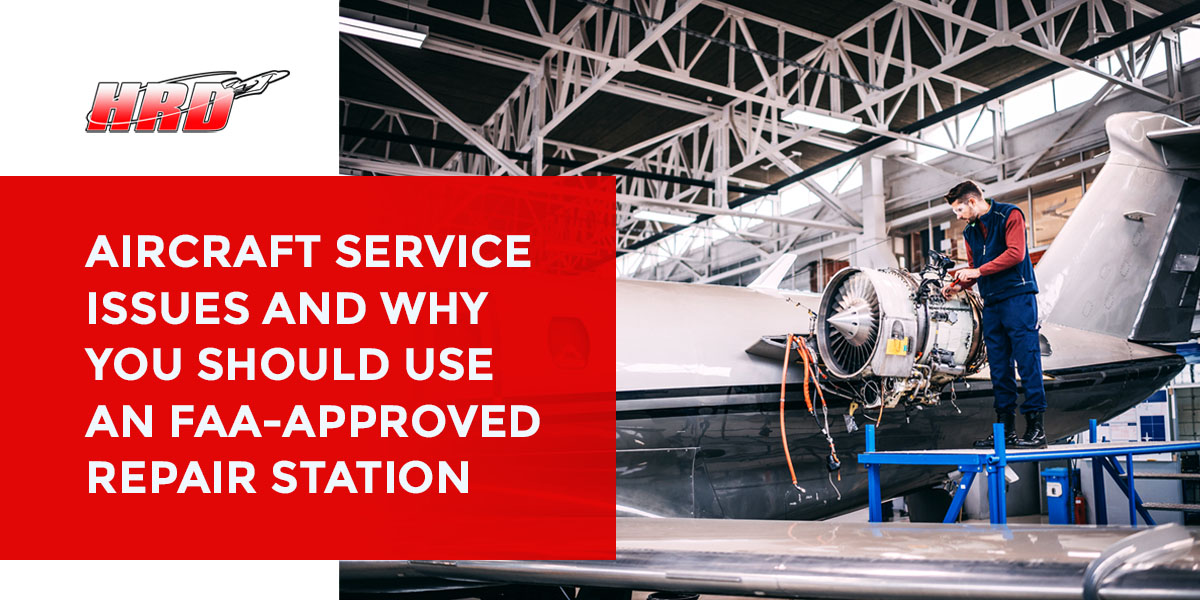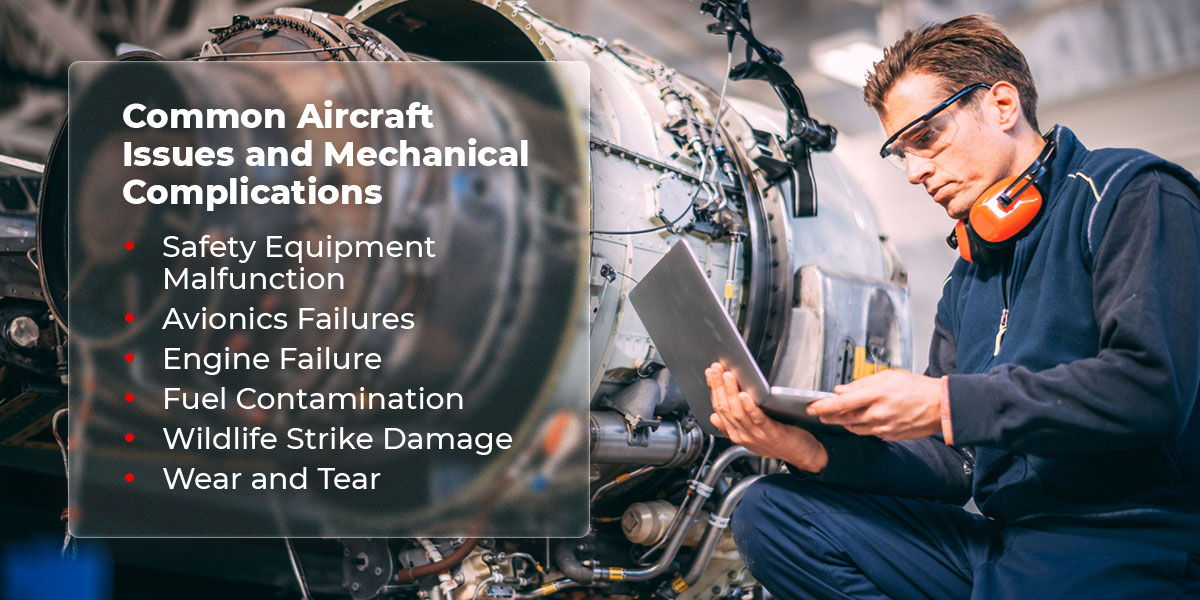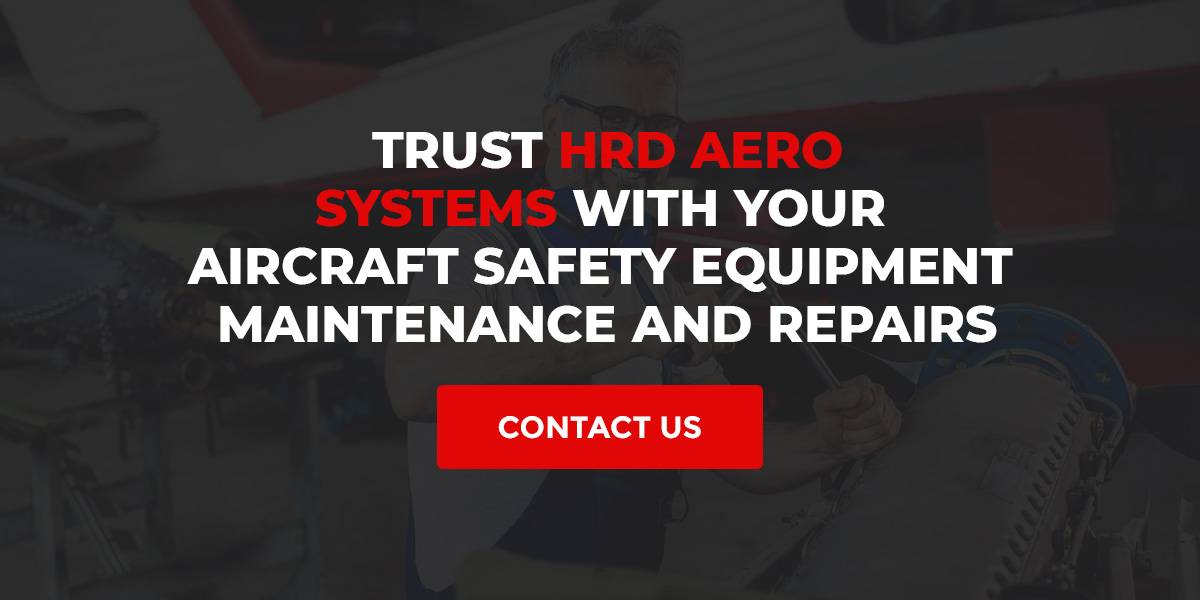
The Federal Aviation Administration (FAA) enforces safety standards and regulations to ensure aircraft are safe for flight. FAA-approved repair stations complete private and corporate aircraft maintenance thoroughly and in compliance with FAA standards. Each FAA-approved repair station has the authorization to perform specific repairs. For example, one station may work on airframes while another focuses on safety equipment maintenance. Understanding common aircraft service issues and working with an FAA-approved repair servicer can help you maintain flight safety and extend your aircraft’s life span.
Aircraft Maintenance Problems and Solutions
Aircraft issues can occur due to the following factors:
Component and Step Omissions
Omitting parts during a repair or skipping steps during an inspection can result in errors. Each aircraft component contributes to crew and passenger safety. Every screw and bolt is crucial for proper aircraft operation, so completing each step of an inspection or repair is essential.
Manufacturer Defects
Since each aircraft component is important for safe flights, installing quality parts is essential. Aircraft malfunctions can occur when a part or component fails. Using dependable parts from reputable manufacturers can prevent damage and complications from faulty parts. Working with an aircraft repair servicer that performs maintenance with quality parts is essential.
Violations
A violation occurs when an individual knowingly completes an inspection or repair without following proper procedures. Violations can occur with or without good intentions. A trained individual may forget a step or purposely skip a step to prevent a flight delay. Reminding employees about protocol, steps and the importance of following proper procedures prevents violations.
Poor Training
Mistakes can also occur during repairs and inspections due to improper technician training. Technicians require extensive training to work on aircraft parts or safety equipment, and they require ongoing training to continue performing aircraft maintenance. Three solutions can help you prevent aircraft service mistakes:
- Proper employee training: Training employees to perform tasks correctly prevents mistakes. Employees should complete extensive training before starting work, and they should receive training at intervals to continue following procedures. Crew members, flight attendants and anyone who performs small or large maintenance tasks must have the proper training to keep an aircraft safe.
- Correct type of aircraft maintenance: Since different types of repair stations specialize in various services, choosing the right repair station for each specific need is essential. For example, you should take your aircraft to a repair station that specializes in airframe maintenance when your aircraft’s body requires attention. You should also regularly visit an FAA-approved station that specializes in safety equipment maintenance to ensure your aircraft’s emergency equipment meets safety standards.
- Reputable aircraft maintenance service: Hiring a reputable aircraft service provider ensures trained technicians complete your aircraft inspections and maintenance. Trustworthy aircraft servicers provide extensive training for their technicians, and they ensure each technician continues training throughout their career.
Common Aircraft Issues and Mechanical Complications
Aircraft complications can also occur apart from human error. An aircraft may present safety issues due to the following complications:
Safety Equipment Malfunction
Safety equipment is one of the most important factors of an aircraft. Keeping proper safety equipment on board equips an aircraft for safe flights. Equipment such as fire extinguishers, oxygen systems, AEDs and inflatables prepare flight crews and passengers for potential in-flight emergencies, so it’s crucial that this equipment is in excellent condition at all times.
Consider the following safety equipment complications that can affect an aircraft’s safety:
- Fire extinguishers: A fire extinguisher requires monthly inspections and 4D and 4DS servicing at 5-year intervals because it is susceptible to dents, corrosion, cracks, leaks and inadequate internal pressure.
- Oxygen systems: Aircraft oxygen systems are susceptible to leaks and pressure changes. Proper inspection and maintenance ensures oxygen systems are leak-free and at the correct pressure level.
- AEDs: AEDs require periodic pad and battery replacement to ensure they are in working condition at all times.
- Inflatables: Aircraft inflatables are susceptible to leaks, tears and pressure relief valve malfunctions. An inflatable’s fabric and glue can wear over time, reducing its effectiveness and potentially causing it to tear.
Avionics Failures
Avionics failures are electrical complications that can affect an aircraft’s navigational and communication functions and performance. Thorough and regular inspections and maintenance can prevent avionics failures.
Engine Failure
Engine failure can occur due to air blockage, carburetor ice, fuel starvation, fuel contamination, fuel exhaustion or spark. Employees and trained technicians who specialize in engine maintenance can help prevent these complications with the following maintenance tasks:
- Thoroughly examining aircraft air intake
- Complete thorough pre-flight fuel inspections
- Perform proper fuel management procedures
- Ensure fuel caps are secure before each flight
- Complete an engine run-up during each pre-flight inspection
Fuel Contamination
Contaminated fuel can result in fuel system component corrosion, fuel cell corrosion, instrumentation failure and fuel filter clogging. It can also block the fuel supply’s flow to the engine. Fuel contamination can occur due to the following complications:
- Particulates: Particulates can contaminate fuel when debris or dirt enters open ports. Fuel system line degradation can also introduce particulates into the fuel system.
- Water: Water can contaminate fuel when humidity is present.
- Microbial growth: Fungi and bacteria can grow in aircraft fuel when water is present.
Employees and trained technicians can prevent fuel contamination with the following maintenance procedures:
- Cleaning filters regularly to prevent clogging
- Replacing fuel filters when necessary
- Regularly inspecting fuel filters
- Inspecting the source of contamination anytime excessive particulates are present
- Capping open fuel lines during maintenance to prevent water and particulates from entering the fuel system
- Sampling fuel from the tank’s lower fuel drains to catch contaminants that may have settled at the bottom of the tank
- Ensuring fuel tanks are always topped off to prevent moisture from entering the system
- Keeping fuel dispensing and storage equipment clean
- Checking fuel samples during pre- and post-flight inspections
- Completing fuel inspections on level ground to ensure any contamination, such as water, appears when present
Wildlife Strike Damage
Bird strikes can inflict aircraft damage and reduce safety, and a flock of small birds can cause significant damage. Following a bird strike, an FAA-approved airframe repair station should perform an aircraft inspection that identifies the number of internal and external impact sites and their length, width and depth measurements. It’s also important to ensure an FAA-approved repair station authorized to work on aircraft engines conducts a thorough engine inspection and makes any necessary repairs.
Wear and Tear
While mechanical complications are possible, proper inspections and maintenance can prevent them. Scheduling the right types of aircraft maintenance at the right intervals, replacing worn parts and making necessary repairs is essential for safe operation. Different levels of aviation maintenance are necessary each time your aircraft reaches the following flight hour intervals:
- 120-150 hours: Schedule an A inspection each time your aircraft reaches 120-150 flight hours.
- 750 hours: Schedule a B inspection after every 750 flight hours.
- 3,000 hours: An aircraft requires a C inspection after every 3,000 flight hours.
- 20,000 hours: A D inspection is required each time an aircraft reaches 20,000 flight hours.
Why You Should Use an FAA-Approved Repair Station
Trusting an FAA Part 145 repair station is beneficial for the following reasons:
FAA Compliance
The FAA heavily regulates FAA Part 145 repair stations, ensuring they follow strict government guidelines. Working with an FAA Part 145 repair station ensures your aircraft is in compliance with government standards and regulations.
Safety
FAA Part 145 repair stations train employees to maintain aircraft components correctly. They provide thorough inspections and repair parts with the proper procedures. Trusting the right regulated repair stations to maintain your aircraft and its emergency equipment increases safety for crew members and passengers.
Equipment Longevity
Since FAA Part 145 repair stations thoroughly inspect and repair aircraft components, they help extend each part or piece of equipment’s life span. Trained technicians know how to identify damages, repair components and replace parts properly to keep aircraft in top shape.
Trust HRD Aero Systems With Your Aircraft Safety Equipment Maintenance and Repairs
Working with an FAA-approved repair station and choosing the right repair station for each aircraft component is essential. The FAA authorizes each aircraft repair station to specialize in a specific area, allowing stations to provide specific services.
Proper aircraft safety equipment maintenance is crucial for crew and passenger safety, equipment longevity and FAA compliance. HRD Aero Systems specializes in aircraft equipment maintenance and repair services that comply with FAA regulations. We are an FAA-approved Part 145 repair station with over 38 years of experience in aviation equipment inspection, maintenance and repair.
We offer Parts Manufacturer Approval (PMA) replacement parts so each of your aircraft equipment’s components is dependable and safe. Contact HRD to learn more about our FAA-approved maintenance services.


